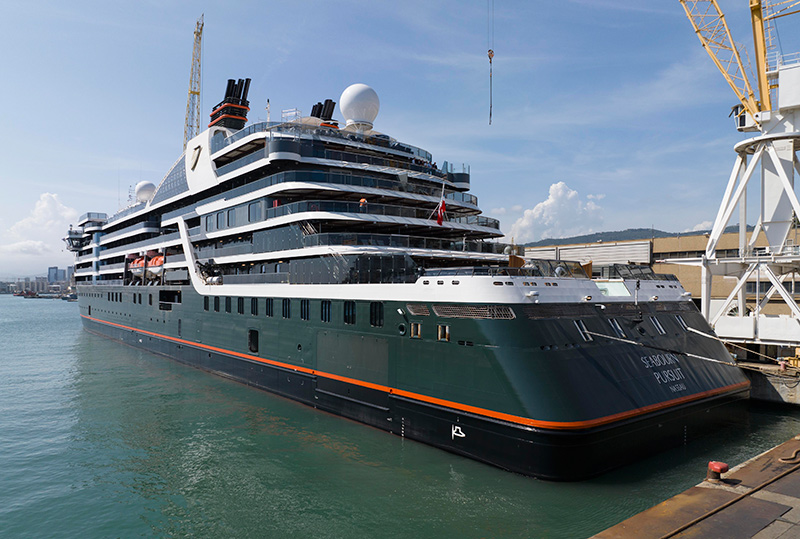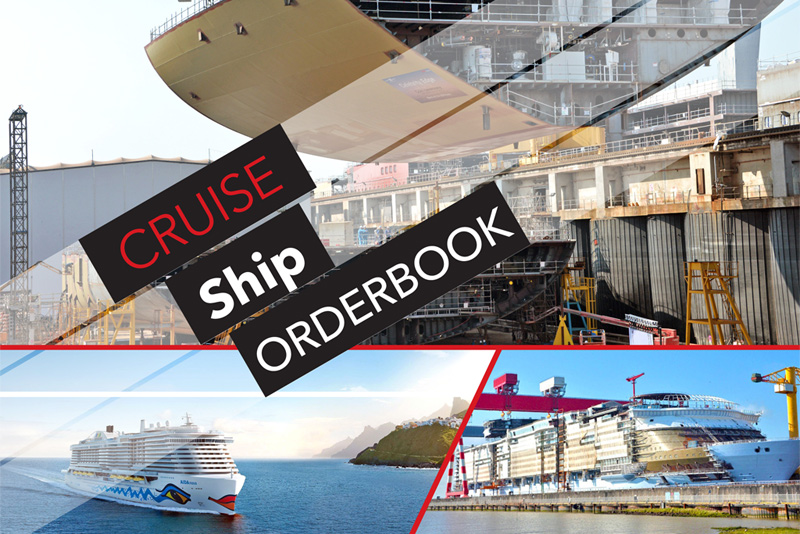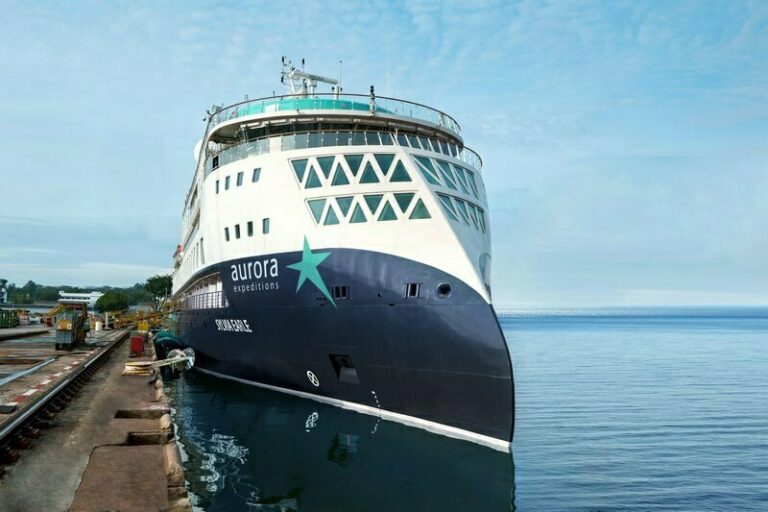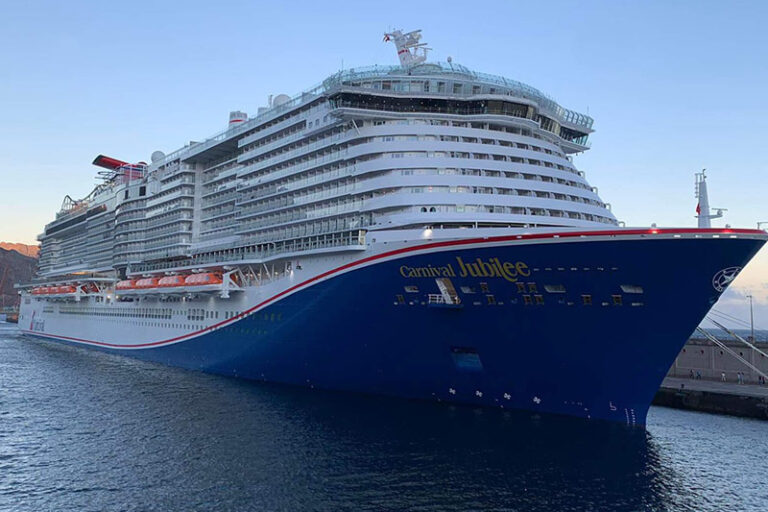Cruise Ship Orderbook: 56 New Vessels and $39 Billion
In the ever-expanding world of cruise ships, the orderbook is bursting with 56 new vessels and a staggering $39 billion in investments. These upcoming ships will bring over 129,400 berths to the market by 2028. The year 2023 alone will witness the delivery of 19 ships and 38,587 berths, with 2024 adding an additional 10 vessels and 25,450 berths. Offering a diverse range of sizes and styles, from small expedition ships to massive contemporary ones, the orderbook caters to various segments and niches. Exciting highlights include Royal Caribbean International’s upcoming Icon of the Seas, set to be the world’s largest cruise ship, and MSC Cruises’ World class series, featuring three 5,400-guest vessels. With multiple other brands contributing to this remarkable expansion, the future of cruising is full of anticipation.
Overview of the Global Cruise Ship Orderbook
The global cruise ship orderbook currently stands at an impressive 56 new vessels on order, representing a staggering $39 billion in investments. These new ships are expected to add more than 129,400 berths to the cruise industry by 2028. This influx of new ships demonstrates the continued growth and popularity of cruising as a vacation option.
Delivery Timeline for New Ships
The delivery timeline for these new ships is as follows:
- In 2023, a total of 19 ships and 38,587 berths will be delivered, providing ample opportunities for travelers to experience the joys of cruising.
- The following year, 2024, will see an additional 10 vessels and 25,450 berths entering service, ensuring that the demand for cruising is met.
- Looking further ahead, 2025 is shaping up to be a strong year for newbuilds, with 19 ships currently on order, potentially bringing 46,830 berths to the market.
- Between 2026 and 2028, an additional 20 ships and almost 35,000 berths are set to enter service, solidifying the industry’s commitment to expansion and growth.
These delivery timelines highlight the dedication of cruise lines to providing their guests with the latest and most innovative ships available.

Average Cost and Size of New Vessels
The average cost of these new vessels is nearly $685 million, reflecting the significant investment being made by cruise lines in their fleets. These new ships come in a range of sizes, from small expedition ships to huge contemporary ships, catering to the diverse needs and preferences of cruise passengers. The variety in ship sizes ensures that there is something for everyone, regardless of their cruising preferences.
Noteworthy Ships in Order
Several ships stand out amongst the global cruise ship orderbook:
- The 250,800-ton Icon of the Seas, being built for Royal Caribbean International, is set to become the world’s largest cruise ship upon its delivery later this year. With a capacity of 5,610 guests, this ship promises to offer an unforgettable cruising experience.
- MSC Cruises is also constructing large vessels with its World-class series. Following the successful entry into service of the MSC World Europa in 2022, the company has three additional 5,400-guest cruise ships on order, scheduled for delivery by 2028. These ships will undoubtedly provide guests with a world-class cruising experience.
- The Adora Magic City is another exciting addition to the orderbook. This 135,500-ton vessel, built by a Chinese shipyard, will be the first large cruise ship of its kind. Set to enter service later this year, it signifies China’s growing presence in the cruise industry.
The inclusion of these noteworthy ships in the orderbook demonstrates the industry’s commitment to innovation and providing guests with unparalleled cruising experiences.

New Vessels for Specialty Market Segments
In addition to the mainstream cruise ships, the orderbook also includes new vessels for specialty market segments. These segments include expedition cruises, luxury cruises, and upscale vessels. Cruise lines such as Viking Ocean, Explora Journeys, Mystic Cruises, SunStone Ships, Princess Cruises, TUI Cruises, Cunard, Silversea Cruises, and Disney Cruise Line are all investing in new ships tailored to these specific market segments.
These specialty market segments cater to travelers looking for unique experiences, personalized service, and exceptional amenities. The inclusion of these new ships in the orderbook ensures that there are options available for every type of traveler.
Trends and Projections in Cruise Ship Construction
The cruise ship construction industry is experiencing several trends and projections that shape the orderbook:
- There is an increasing investment in newbuilds, indicating the industry’s confidence in future demand for cruising. The significant financial commitments made by cruise lines highlight their belief in the continued growth and profitability of the sector.
- There is a growing emphasis on luxury and comfort in cruise ship design. Cruise lines are investing in state-of-the-art amenities, spacious staterooms, and sophisticated onboard facilities to provide their guests with a premium experience.
- The rise in expedition ships signifies an increasing demand for specialty cruises that offer unique and immersive experiences. These ships are designed to visit remote and exotic destinations, catering to adventurous travelers seeking off-the-beaten-path itineraries.
These trends and projections reflect the evolving preferences of cruise passengers and the industry’s commitment to meeting their desires.

Implications for the Global Cruise Industry
The increasing number of ships in the orderbook has several implications for the global cruise industry:
- The upsurge in capacity will provide more options and availability for cruise travelers. With the addition of 129,400 berths through 2028, more people will have the opportunity to experience the joys of cruising.
- The potential for expansion into new markets is significant. As cruise lines continue to invest in new ships, they can explore untapped regions and cater to emerging markets.
- Stiffer competition among cruise lines is expected as the orderbook fills with new ships. Cruise lines will need to differentiate themselves through innovative itineraries, onboard experiences, and exceptional service to attract and retain passengers.
These implications highlight the industry’s continuous evolution and dedication to meeting the demands of an ever-growing market.
Challenges in Cruise Ship Construction
While the cruise ship construction industry is flourishing, it does face several challenges:
- Scaling up operations to meet the increasing demand presents logistical and operational challenges. Shipyards and suppliers must ramp up their production capabilities to accommodate the construction of multiple vessels simultaneously.
- Complying with environmental regulations and standards is crucial for the industry’s sustainability. Cruise lines are investing in technologies and practices that reduce their environmental footprint, ensuring that their new ships meet or exceed the highest environmental standards.
- Innovations and technological advances in cruise ship design and features require continuous research and development. Cruise lines must strike a balance between incorporating new technologies and maintaining the quality and safety of their ships.
- Balancing costs and quality in cruise ship construction is a constant challenge. While cruise lines strive to build innovative and luxurious ships, they must also manage costs to ensure a return on investment.
These challenges demonstrate the complexities involved in the construction of new cruise ships and the industry’s dedication to overcoming them.

Future Outlook for the Cruise Ship Orderbook
The future outlook for the cruise ship orderbook is influenced by several factors:
- Global economic trends will dictate the demand for cruising. As economies recover and travel resumes, the demand for cruise vacations is expected to rebound.
- Rising travel and tourism will have a positive impact on the cruise industry. As more people seek memorable travel experiences, the demand for cruises is likely to increase.
- Climate change and environmental concerns will shape the industry’s approach to ship design and operations. Cruise lines will continue to invest in sustainable practices and technologies to reduce their environmental impact.
- Expected innovations and developments in cruise ship architecture and design will create new possibilities for shipbuilders and cruise lines. Continuous advancements in technology will enhance the onboard experience and offer guests new and exciting features.
The cruise ship orderbook reflects the industry’s adaptability and commitment to providing a memorable and enjoyable vacation experience for travelers around the world. As cruise lines continue to invest in newbuilds, the future of cruising looks bright, promising exciting innovations, expanding market presence, and unforgettable journeys at sea.






